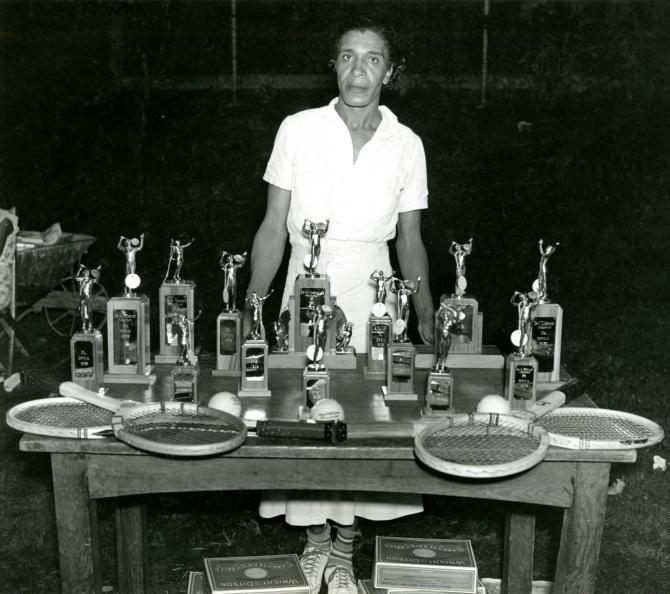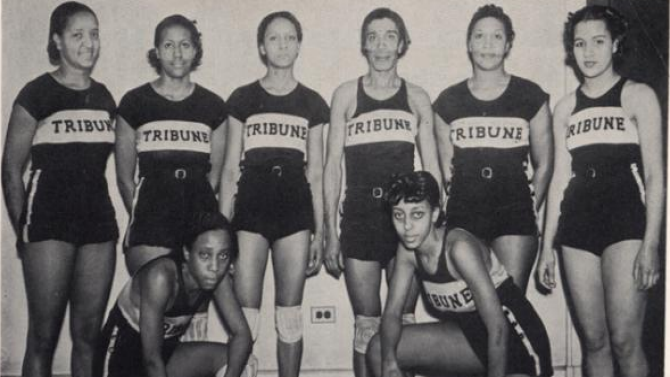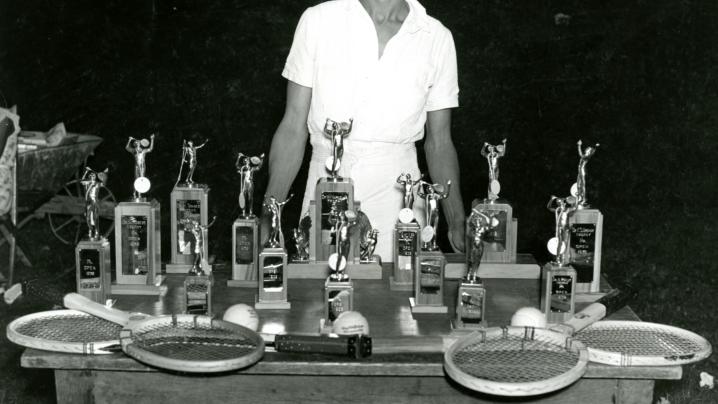[ad_1]

Ora Washington
John W. Mosley Photograph Collection, Charles L. Blockson Afro-American Collection, Temple University Libraries
Philadelphians had little to cheer about in the winter of 1932. Over 250,000 people—a quarter of the workforce—were unemployed, many more were working part time, and thousands had lost their savings with the collapse of several banks. For black Philadelphians, the Great Depression was even worse. Only 13 percent enjoyed full-time employment, 45 percent were unemployed and 42 percent worked only part time. More than one-third of black families were on poor relief, and in one African-American neighborhood, two-thirds of the homes had no indoor plumbing and half had no central heating
But that February and March of 1932, amid the economic gloom and real suffering, black Philadelphians were gripped by a basketball tournament to determine the best African-American women’s team in the city, as well as the nation. The local black newspaper perhaps exaggerated in promising the matchup between the Germantown Hornets and the Philadelphia Tribunes would make the city “forget the Depression,” but the same ad was surely correct in describing the series as a battle between “two of the greatest girl players in the world”: Inez Patterson of the Tribunes and Ora Washington of the Hornets.
Ora Belle Washington was born in 1899 in rural Caroline County, Va. The fifth of nine children, she worked on her parents’ small farm from an early age, mainly doing household tasks since her father did not want his daughters working in the fields. In summertime, the small black community played sports like baseball and croquet, where Ora began to show her athletic skills and competitive edge. After her mother’s death in 1908, and her father’s financial problems in the early 1910s, Ora left Virginia to live with an aunt in the Germantown neighborhood of Philadelphia.
According to the 1920 census, Ora Washington found work as a domestic. She also took advantage of the facilities of the Germantown YWCA, where she began playing tennis and made her mark in 1925, defeating the reigning singles champion of the all-black American Tennis Association, and winning the first of 12 straight ATA women’s doubles titles.
After moving for a short period to Chicago, where she worked as a hotel maid and attended the Chicago Presbyterian Training School, Washington captured her first ATA singles title in 1929. She defended it successfully each year until 1936, when she lost to another Philadelphian, her sometime doubles partner, Lulu Ballard. Washington regained her title in 1937 and then retired from singles competition, with lingering disappointment that the reigning white champion of tennis, Helen Willis Moody, refused to give her a match. She competed in mixed doubles into her late 40s.
Not especially tall—she stood 5 foot 7 inches—Washington was famed for her forceful ground strokes, her play at the net and for her mental strength. “She was dynamic to watch,” one tennis fan recalled, “and her overhead game was terrific.” Tennis, however, was very much a game played by the college-educated and aspiring African-American middle classes. The plainspoken, working-class Washington was never fully at ease in the ATA’s social scene, which has been described as “a grand social gathering for the upper reaches of black society.”
She was, however, fiercely competitive and had begun playing basketball while in Chicago with the Savoy Colts, the sister team of the city’s Savoy Big Five, one of the leading professional black basketball teams of the era. Returning to Philadelphia, she joined the Germantown YWCA Hornets in the fall of 1930 as a means of staying fit for tennis during the winter months. Inspired by Washington, who averaged 13 points a game in what were usually low-scoring affairs, the Hornets went 22-1 to win the unofficial black women’s championship, played by teams from New York down to Washington, D.C., and Baltimore.
In the fall of 1931, the Hornets became a professional club, providing much-needed income for Washington and her teammates. That 1931-32 season would also see the emergence of a rival to the Hornets: the Philadelphia Tribune Girls, a women’s “Black Five” led by a young Inez Patterson. Previously known as the “Quick Steppers,” the team was sponsored by the Tribune, Philadelphia’s leading African-American-owned newspaper, which was looking to capitalize on the growing popularity of women’s sports. As the Hornets and the Tribunes traveled up and down the Eastern Seaboard, defeating all opponents, crowds for the women’s games began to outnumber those for local men’s college teams like Lincoln University and the Tribunes’ men’s team. By January 1932, both clubs agreed that a five-game series in Philadelphia would determine the nation’s best black women’s team.

The oldest black newspaper in Philadelphia, the Philadelphia Tribune, sponsored the Tribune Girls basketball team. Ora Washington is standing, third from the right.
Philadelphia Tribune
Heavily hyped by the Tribune, and followed avidly by the East Coast black press, the series began in early February with an intense but low-scoring 20-15 victory for the Hornets, with Washington in dominant form. Three weeks later, the Tribunes exacted revenge, sending the Hornets to their first defeat in over 40 games. The teams split the next two games in March, leaving a decider to be held on Easter Monday, March 27. In that game, the Tribunes took a commanding lead into the third quarter, only for Ora Washington to power a Hornets rally with a combination of long-range shots and twisting drives to the baskets. The Hornets’ victory was denied, however, by two clutch free throws by the Tribunes, sending the game into overtime, which the Tribunes won by 8 unanswered points.
Although she had lost out on the national title, Washington was selected for the year’s all-star team and was regarded as the “greatest girl player of the age … [who] can do everything required of a basketball player. She passes and shoots with either hand. She is a ball hawk. She has stamina and speed that make many male players blush with envy. And despite … elaborate defenses especially mapped out to stop her, she has averaged 16 points per game (pdf) with a high total of 38 points in one game.”
[ad_2]






















